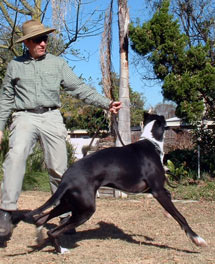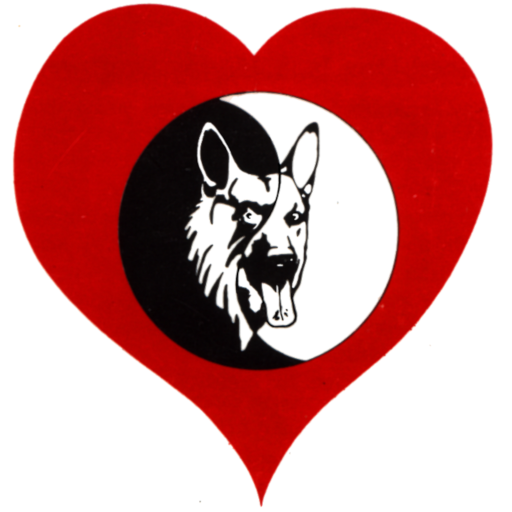Social Reinforcement Training
Social Reinforcement Training helps develop trust between the dog and its humans
Dog Pack Theory
Dominance Subordination Hierarchies
We can think of the dogs need to be part of a pack as a genetically programmed trait. This is probably not technically accurate, but it is close enough to be useful. Nature designed dog packs to operate most efficiently with a dominance subordination hierarchy. A clearly defined leader/follower hierarchy or relationship allows for a more efficient pack or group effort. The trait for group cooperation had a great deal of survival value for wild dogs, and it is one of the things that has made the dog so valuable to humans.
This brings us to the first important element in social reinforcement training; establishing the proper leadership role in relation to the dog. As a working model for this type of training we will work with the hypothesis that the dog interacts with people in the family as they would interact with members of a dog pack. They may not view people the same as they view other dogs, but because of the dog’s nature they interact in a doggy way.
In general a dog will feel more secure if the dog’s leader acts self-assured and secure. Confidence often produces a leader that followers believe in. This in turn helps establish a well-defined leader/follower hierarchy. To avoid dog behavior problems, people in the family should act, if not be, self-assured and confident. If the humans act like leaders the dog(s) will follow.
In a dominance subordination hierarchy there will be high ranking members, middle ranking and low ranking members. If you are using any dominance theory in your training program the dog must perceive a large ranking gap between the people in the family pack and the dog. Otherwise there can be middle ranking conflict between the higher and lower ranking members. For those who don’t like the idea of dominance theory, think of this as a hierarchy of confidence. Who is more confident, you or the dog? You must be confident and decisive. Handler confidence will not solve every behavior problem but it will help manage and/or overcome quite a few.

Establishing the proper relationship through play training a Great Dane puppy
Social reinforcement training involves using the social relationship to control the dog’s behavior.
In order to control the dog’s behavior with the social bond, one must establish the proper relationship for reinforcement. The term social reinforcement training always brings to mind praise and other overt types of reinforcing social interactions ( touching, talking, or looking at in an encouraging way) However, social reinforcement training goes far beyond rewarding the dog’s good behavior.
Social reinforcement training involves making the dog feel more secure by being committed, confident, fair, firm, definite, and consistent.
Social reinforcement training is about establishing a balanced relationship with the dog, not an equal relationship. A balanced relationship involves both well-defined human leadership, as well as the dog’s Total Trust. Since we are the ones with the capacity for high levels of abstract thought, it’s our job to learn to control our own behavior and learn to understand our dogs.
To be in harmony with the dog we must blend in with the dog’s genetically programmed behavior. We can call these behaviors species specific behaviors.
Things you can do to establish and maintain a leadership role in your dog’s life
• People lead, the dog follows
• Don’t compromise with your dog
• People initiate action/behavior and terminate action/behavior
• Don’t always attend to your dog’s every desire; make an effort to ignore your dog some of the time
• If you believe in using negative reinforcement, make corrections sharp and well defined, like a verbal blast. When the dog responds, it’s over. In most situations for a short time after the correction, ignore the dog.
Be aware of and use the spatial relationship between you and your dog. Is your dog away from you, close to you, facing you, avoiding you, pushing you, guiding you, between your feet, sitting, standing, turned to the side, keeping its distance, etc…
